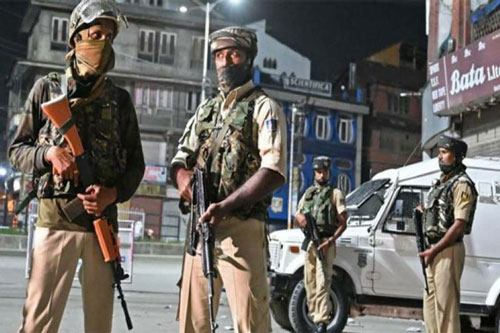The Hindu communal forces including Rashtriya Swayamsevak Sangh (RSS) and Bharatiya Janata Party (BJP) had a long desire of total merger of occupied Jammu and Kashmir with the Indian Union and establish the Hindu civilisation in the territory. Kashmir remained their one of the main focuses following the formation of Narendra Modi-led fascist government in New Delhi in 2014. However, they found a golden opportunity to give practical shape to their nefarious designs after the BJP won a landslide victory in 2019 Indian general elections. They intensified their efforts to implement their Hindutva agenda in the territory and as a first step made the announcement of repealing the special status of occupied Kashmir on August 05, 2019. As such, this date became a turning point in the history of IOJK.The move came via presidential orders, which revoked Article 370 and Article 35A of the Indian constitution. Article 370 had accorded special autonomous status to Jammu and Kashmir and all the provisions of the Indian Constitution, which were applicable to the Indian states did not apply to the territory. Due to this Article, Jammu and Kashmir was a region, which (despite being a part of Indian Union under the so-called Instrument of Accession) enjoyed separate constitution, flag and official language. It was only because of this Article that except for defence, foreign affairs, finance and communications, Indian Parliament needed the concurrence of the so-called government of Jammu and Kashmir. Though most of the special privileges that Jammu and Kashmir was entitled under the Article 370 had long been eroded with the passage of time yet Article 35A debarred non-Kashmiris from acquiring property and jobs in government institutions in the territory. The Indian government also divided the occupied territory into two Union Territories – Jammu and Kashmir with a legislature and Ladakh without a legislature.
Following the sensitive announcements made on August 5 and the subsequent days, the Indian government suspended mobile, television, landline and internet services and imposed curfew in the main cities and towns of IOJK. Indian paramilitary personnel were deployed in every nook and corner of the occupied territory while the army and air force were also put on high alert. Fear and anxiety had already gripped occupied Kashmir as India had deployed 38,000 additional troops during the past few days. It had also cancelled a major Hindu pilgrimage, Amarnath Yatra, ordered closure of schools and colleges and asked tourists to leave the territory. The authorities also imposed strict restrictions on media. Local newspapers even failed to update their online editions. Majority of newspapers also could not be printed for months due to curfew and other restrictions. No reports of territory could reach to news outlets in India and the world.
—(This article has been compiled by Muhammad Raza Malik who is the senior editor of the Kashmir Media Service.)










